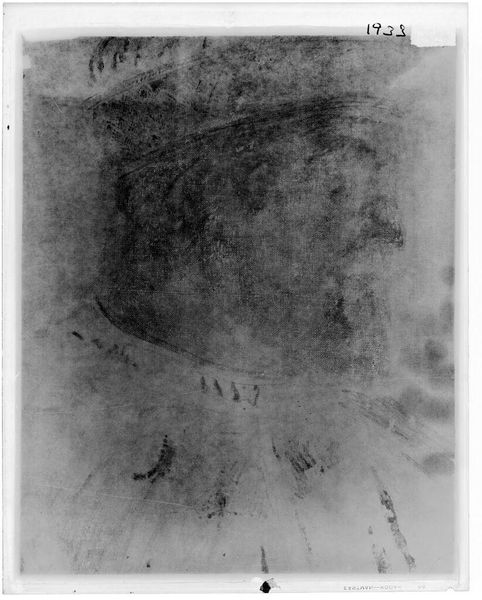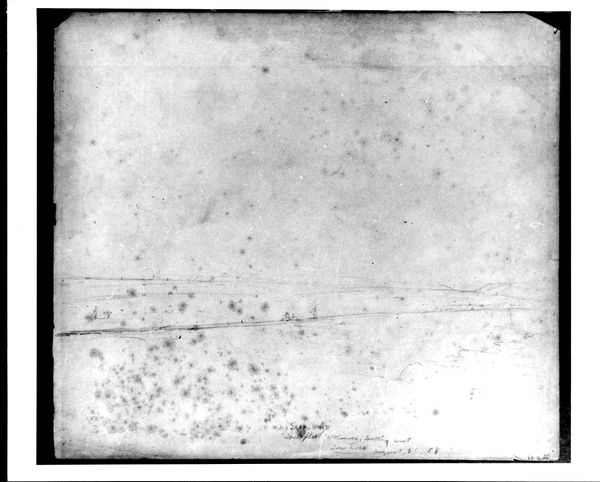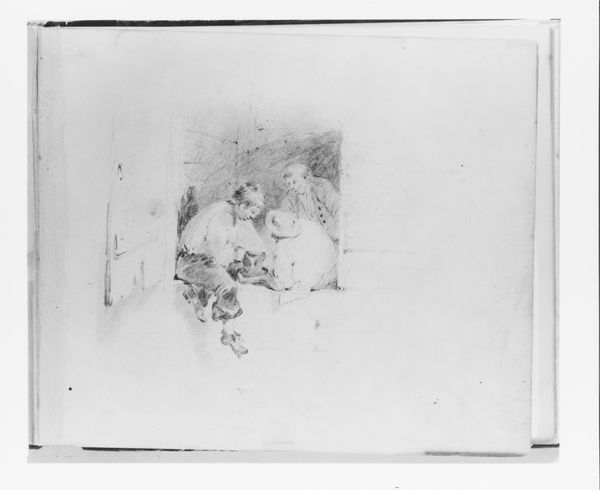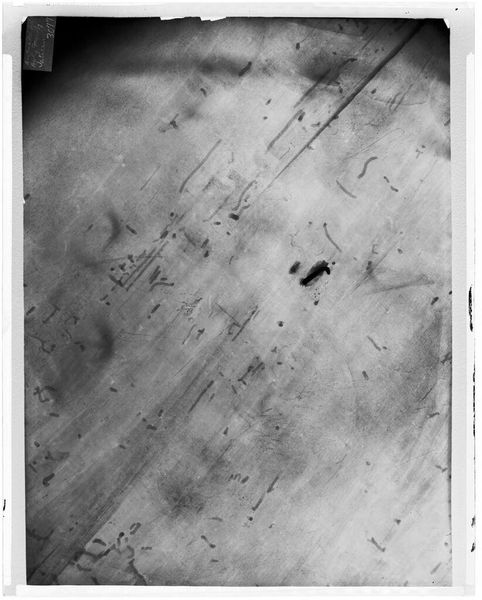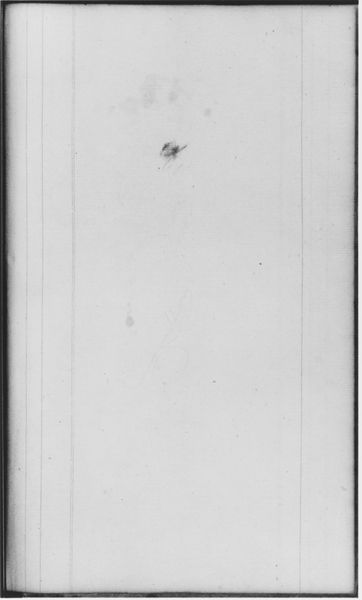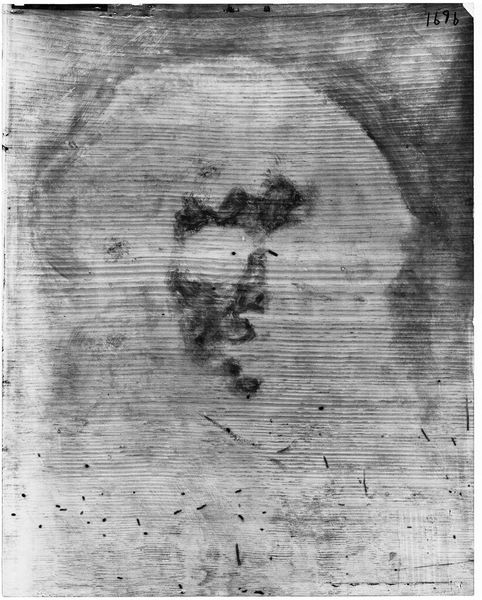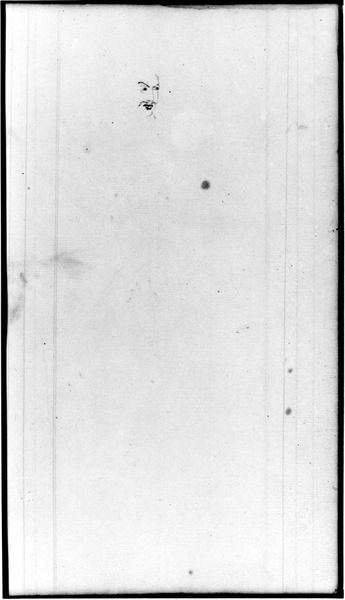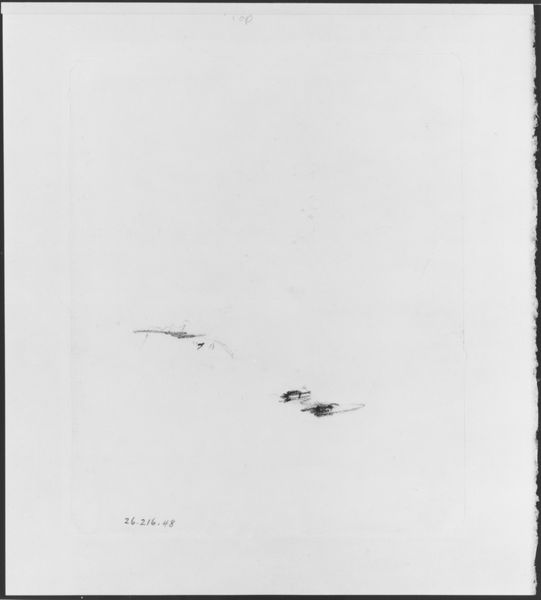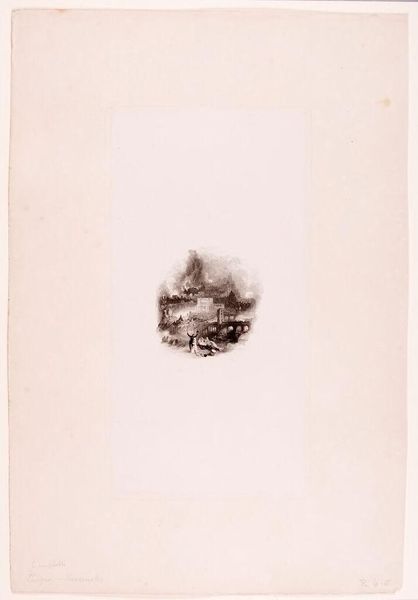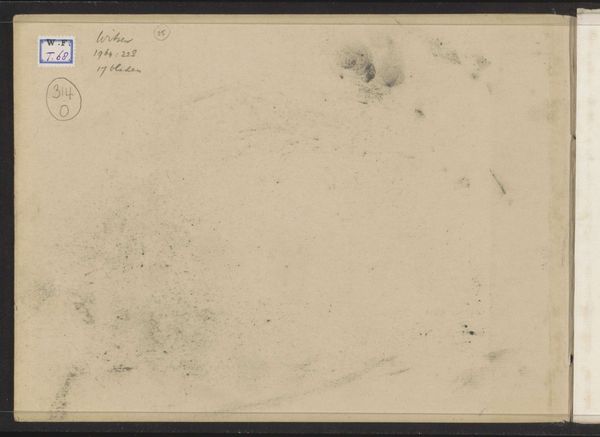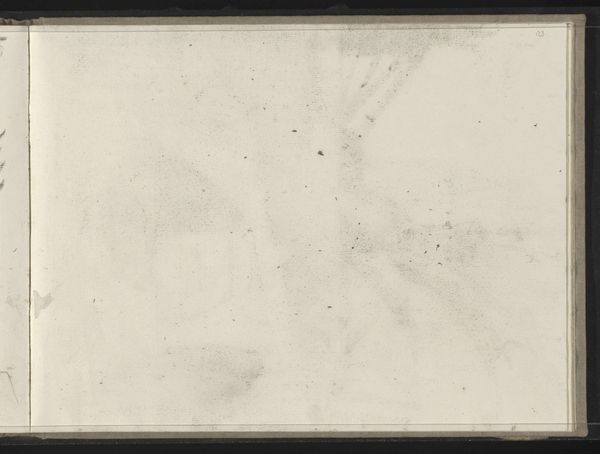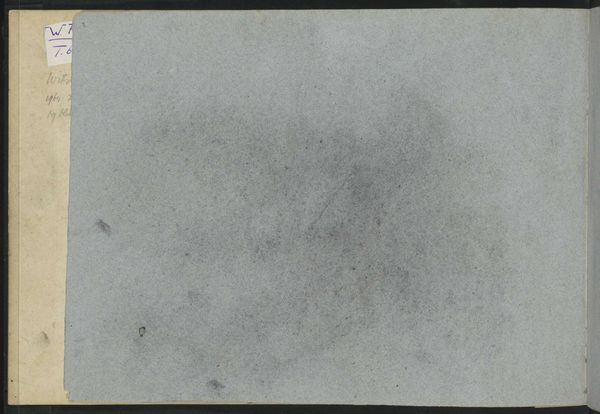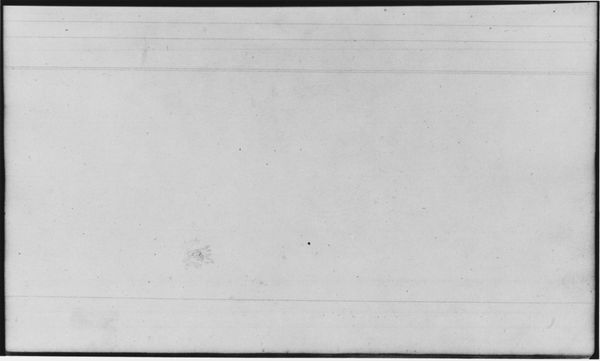
Inside Front Cover (from Sketchbook) 1857 - 1860
0:00
0:00
Dimensions: 8 7/16 × 11 1/16 in. (21.4 × 28.1 cm)
Copyright: Public Domain
Editor: Here we have "Inside Front Cover (from Sketchbook)," dating from around 1857-1860, by John Quincy Adams Ward. It's a drawing done in pencil and graphite on paper. At first glance, it seems rather…empty. Almost like a blank slate, with these amorphous darker shapes interrupting the surface. How do you interpret this work? Curator: A pertinent question. Focusing solely on its intrinsic qualities, one is immediately drawn to the tension between the perceived emptiness and the palpable texture of the paper. The "empty" space isn't truly empty, is it? Note the subtle gradations of tone, the faint specks and smudges scattered across the surface. And how do these darker shapes function within the composition? Editor: Well, they seem to anchor the eye, preventing it from wandering aimlessly. Are they meant to be read as forms, or just stains on the page? Curator: Precisely. Consider their organic quality – soft edges, uneven distribution. They disrupt the uniformity, injecting an element of chance and accident into an otherwise structured field. The artist’s hand is evident in the strategic placement of those stains that generate such a high level of abstraction. Can we view them as a study in controlled imperfection? A demonstration of how seemingly random marks can generate aesthetic interest? Editor: That’s interesting. I was so focused on the perceived "flaws" that I missed how they contribute to the overall dynamism. I guess, viewing it from a formalist perspective, it’s not really about what's *on* the page, but *how* it's on the page. Curator: Indeed. It provokes one to question the very definition of "finished" artwork. What constitutes artistic intention and artistic value, as defined through its textures, marks, and composition? Editor: Right, so focusing on the internal relationship within the artwork, we move away from judging it by external themes, and are instead guided by how its internal elements all play together. Curator: Agreed, which changes how we perceive that ‘empty’ space now.
Comments
No comments
Be the first to comment and join the conversation on the ultimate creative platform.
